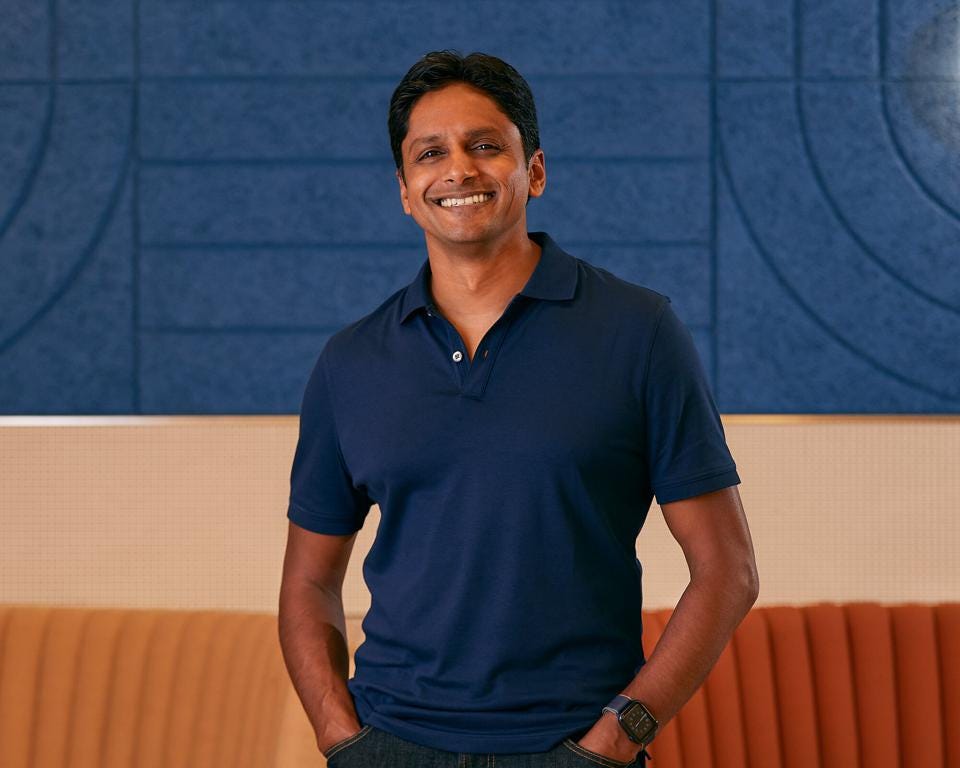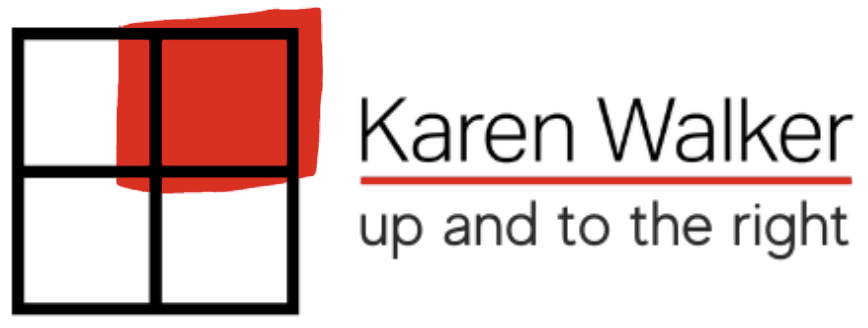
Karen Walker: You’ve been the CPO at Samsara for six years. Can you talk about the evolution of the product during that time?
Kiren Sekar: If you aren’t familiar with Samsara, we’re a cloud platform for physical operations. Physical operations make up approximately 40% of the world’s GDP. It’s massive. When you look at these operations, you see a lot of software from the nineties: disconnected systems, a lot of pen and paper and many green screens. These operations fundamentally affect so much of our day-to-day life. But they haven’t benefited from modern software and data in the way that the rest of our economy has.
Samsara was founded to change that. We’ve been building technologies like IoT, to get data from sensors, cameras, cloud software and AI. Now we have about 20,000 customers using the system to manage their operations.
Fundamentally, what they’re able to do is to have visibility that they didn’t have before and become safer, more efficient and more sustainable. That’s Samsara in a nutshell.
Walker: How did the idea for Samsara come about?
Sekar: I previously worked with our co-founders at Meraki, which Cisco acquired. I felt like we had an amazing leadership team at Meraki. I started thinking about waves of technology and how those waves could impact this massive part of the world that has been overlooked by Silicon Valley historically. Talking with the Meraki co-founders about what they wanted to do next, our interests aligned around this opportunity to improve a large part of the way the world works. It was a straightforward decision.
Walker: I love the TAM plus an opportunity for impact. Physical infrastructure is an under-addressed market, but it’s also an area where it’s harder to get people to fund innovation because it’s not the sexy part of the business.
Sekar: Interestingly, many of these operations have used technology. Many of them were deploying IBM mainframes back in the eighties and nineties, and many of those are still in use. So, they see the value of software and technology, but there haven’t been many new options available. Part of that is just the nature of these physical operations – you have to get data out of trucks, out of equipment in the field and rugged mobile environments. That’s very different from getting e-commerce data or data out of a banking system, for example. But with IoT, it’s possible to get a lot more data.
Our customers are very practical. They might say, “Hey, if I can run a pilot, I reduce my accident rate.” Or, “I’m able to reduce my fuel consumption, and I’m able to operate better and more efficiently build.” When they recognize improvements like these, they’ll quickly invest.
Walker: Would you share an example?
Sekar: We have products for vehicle fleets managing safety with intelligent cameras, workflow, software, and asset tracking software. These tend to involve getting data from physical assets and operations and pulling them into our cloud. And then, we have a set of software tools that sit on top. A fiber optics infrastructure customer on the East Coast manages their fleet of vehicles and technicians through Samsara. And when a hurricane comes through and knocks out communications across the Eastern Seaboard, they’re the ones that restore services. They’ve found that just by having real-time visibility and optimizing their recovery efforts, they’re saving about $35 million of downtime after each storm.
Another one of our customers is one of the largest transportation and logistics providers in the U.S. They’re using our system for multiple use cases but safety is essential for them. They have well over 5,000 heavy trucks on the road. And at that scale, accidents are a part of operations. They’ve reduced their accident rate by 13%.
A final example, Athens-Clarke County near Atlanta, is a prominent local government that uses our technology for waste management. By having real-time data from their operations, they have reduced fuel usage by 19%. That’s putting fewer emissions into the air. It’s also lowering costs for approximately 130,000 residents they serve.
Walker: I can see why you’ve attracted so much investment. Where are your products headed in general?
Sekar: We haven’t talked about company culture, but at Samsara, and Meraki before that, we’re about being customer-led and customer-first. Our product roadmap is shaped by our customers. We came into this business knowing a lot about technology but we had to learn about operations that we weren’t operating, such as logistics fleets, energy facilities, or food production facilities. We had to work with customers to learn about their problems.
We see a couple of big themes. One is more AI. We’re just scratching the surface of how we can take this massive amount of data and turn it into insights and benefits for our customers.
Safety is also a huge theme, and these are just inherently dangerous environments. Our customers see how technology can reduce accidents, and they’re hungry for help to drive down preventable accidents.
The third is a significant shift from pen and paper processes to software workflows in the cloud. Our customers can automate more business processes. We’re constantly expanding. I think we’ve added 200 new software features over the last year. By having a cloud platform and feedback from customers, we’re able to operate a high-speed feedback loop, and that’s translating to the product.
Walker: Cybersecurity is a big issue for all companies now, but especially for those who are in the cloud and using IoT. How do you manage that?
Sekar: Security is essential for customers, and we have two advantages. One is that we designed our systems to be connected to the internet. A lot of vulnerabilities occur where you have older systems that weren’t intended to be connected. You bring them online, and they face many different threats.. We were able to build from scratch with the security to be connected.
We also can invest in security on behalf of our 20,000 plus customers. We invest in more security technology and expertise than an individual customer or company could if they were trying to build this technology themselves.
Walker: At the rate that you’re growing, what are some of the issues or challenges that you’re seeing?
Sekar: It’s exciting! It’s easy to forget that the company is only six years old. We have multiple products, large enterprise customers, 1400 employees globally, and great revenue scale. From the perspective of our customers or employees, they don’t care if we are only six years old, we have to deliver. We spend a lot of time focused on leadership development and thinking about how we can continue to improve our leadership training and operations as we grow.
We’re able to develop talent and promote internally. For example, we run several leadership development programs and complement those leaders with executives who have seen growth elsewhere, such as SVPs or EVPs from Salesforce or ServiceNow or Dell. It’s an excellent combination.
After Cisco acquired Meraki, we were able to step away and reflect. We looked back and asked, “What worked, and what contributed to the success?” We identified a few cultural elements that were key to Meraki’s success that were not specific to any one company or technology.
We operate with three core principles. One is a customer-first orientation. Second is a growth mindset – to be able to ship quickly, get feedback and iterate. And the third is a long-term orientation. We focus on delivering results, and making sure that we’re building towards the long term.
Walker: Being a CPO in this fast-growing space, what is it that has made you successful?
Sekar: Throughout my career, I’ve had a strong interest and passion in technology and business and communication. Now I feel like I have my dream job. I am leading product management and strategy, as well as our software engineering and product design. I can understand customers, market trends, and what problems customers are trying to solve. I then combine that with thinking about how technology can solve these issues in ways that customers didn’t think were possible.
I try to understand what gives you energy and where you are having the biggest impact. I then look for a way to increase those two things and also try new things. I believe that when things work, you should do more of them, and when they don’t work, do less. I think you should find a way to orient your career and your goal to a point where those intersect.
That has worked for me. My career has always progressed and been in my control, as opposed to relying on a chance encounter.
